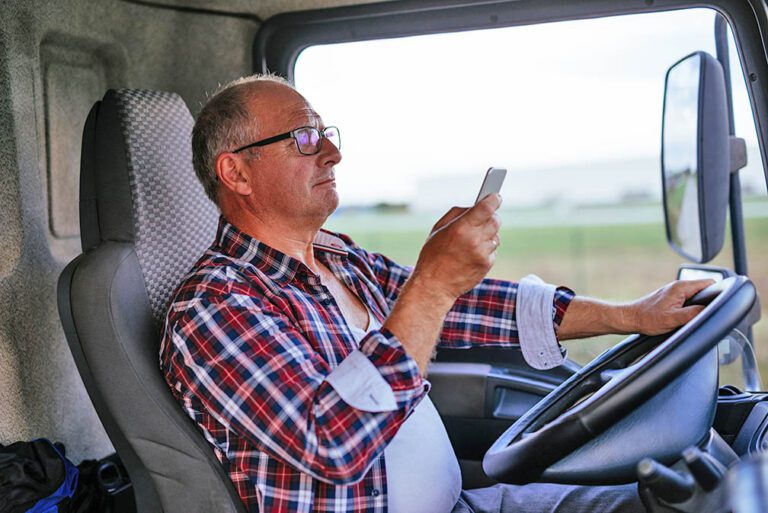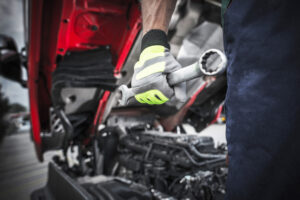WASHINGTON — Roadside cameras and telematics data could provide a more complete picture of driver cellphone use, two new studies from the Insurance Institute for Highway Safety (IIHS) suggest.
Observers relying on photographs taken with roadside cameras were almost as good as in-person monitors at identifying drivers who were using their cellphones, one study showed, according to an IIHS news release.. Another demonstrated that the telematics data collected by the safe-driver apps that are gaining ground in the insurance industry could provide more details about when and how drivers are using their devices.
“One of the challenging aspects of combating cellphone-related distraction is the absence of good information about where, when and how drivers are using their phones,” IIHS President David Harkey said. “Roadside cameras and telematics could help fill in the gaps, improving our understanding of how cellphones affect crash risk.”
Currently, the most up-to-date information about driver cellphone use comes from the National Highway Traffic Safety Administration’s (NHTSA) annual roadside survey. To gather these data, NHTSA stations observers at intersections from 7 a.m. to 6 p.m. over several weeks every summer.
These surveys help to identify trends like a decline in the percentage of drivers holding phones to their ears and a rise in other types of cellphone activities over the past decade. However, they only record information about drivers who are stopped in traffic in places where it’s feasible to station a human observer.
More details are available from video footage of drivers who volunteer to have their daily drives recorded by an in-vehicle camera over an extended period. Such naturalistic driving studies take a long time to execute, and the sample of drivers is often too small to be generalized to the overall driving population.
Information about cellphone-related crashes is even more limited, as surviving drivers are reluctant to tell police officers that they were distracted by their phones and there are no eyewitnesses to many fatal collisions.
Cameras could be deployed on freeways and in other locations where it is too dangerous to station a human observer, allowing better monitoring of cellphone use in fast-moving traffic. If artificial intelligence software can be used to screen for likely cases of distraction, cameras might also allow for the collection of data more frequently or in greater volumes. Eventually, the evidence they provide could also be used to enforce local laws against talking, texting or otherwise manipulating a cellphone while driving — a program that is already underway in Australia.
“Despite some growing pains, many jurisdictions have demonstrated that safety cameras can be an effective tool to reduce speeding and red light running,” Harkey said. “Potentially, they could save additional lives by helping to curb cellphone distraction.”
In one of the new studies, IIHS examined whether camera-based observers could be as accurate as in-person monitors. One monitor observed volunteer drivers in a variety of vehicles directly from a position near the test track. Another used still photos taken by three digital cameras mounted on poles above and beside the track. The observer who relied on photos accurately identified specific types of distracting behaviors (such as holding or manipulating a cellphone or eating or drinking) 72 percent of the time, compared with 78 percent for an observer watching the vehicles in person.
Both were better at recognizing that drivers were engaging in some kind of cellphone activity than identifying exactly what the drivers were doing. The observer using photos was correct 86 percent of the time, compared with 90 percent for the in-person observer.
“That’s really a tiny difference in practical terms, especially considering the increased amount of data that camera-based observation could provide,” said IIHS Research Associate Amber Woods, the lead author of the study.
Meanwhile, telematics could provide robust information about when and how drivers are using their cellphones, the second new study shows. That would give researchers and policymakers a much clearer picture of the connection between cellphone-based distraction and crash risk.
Telematics, which enables usage-based auto insurance and discounts for good driving behavior, refers to the collection of data from a cellphone app or dedicated device when the user is driving. For example, insurers use GPS data from policyholders’ phones to allow customers to pay by the mile. Using other sensors, today’s safe-driver apps can also record hard braking, speeding and other data to bolster the insurance industry’s traditional risk formulas, tailoring them to individual drivers.
Companies can also log every time a driver picks up or manipulates their phone by tracking the gyroscope that allows smartphones to estimate users’ daily step counts and reorients the screen when the device is tipped sideways. If applied widely, this technology could reveal whether a driver was manipulating their cellphone in the moments before impact any time they were involved in a crash. Researchers could match cellphone use to other telematics data, such as hard acceleration and braking.
They could also use data from before and after the implementation of new laws restricting mobile phone use to gauge the effectiveness of the legal changes.
“Telematics data offer a lot more nuanced information than we have now because the information is collected all day long, from a large number of drivers over the entire duration of their drives,” said IIHS Senior Researcher Ian Reagan, the lead author of the second study.
To gauge its reliability, Reagan compared telematics data from Cambridge Mobile Telematics with data from NHTSA’s roadside observations of electronic device use to make sure the results from the two methods were consistent. Using statistical analysis, he found a clear correlation between the regional, weekday, weekend and rush hour trends identified by each method.
Earlier IIHS research suggests that the telematics data are also valuable because drivers’ willingness to engage in distracting behaviors is affected by the driving context.
The study found that Virginia drivers were 50 percent more likely to manipulate their phones while stopped at intersections than while traveling on a straight road, for instance. Collected when the vehicle is traveling at 9 mph or faster, the telematics data complement NHTSA’s in-person observations at intersections. On the other hand, one limitation is that the telematics data come only from people who have opted into usage-based insurance and safe-driver programs — who might be more conscientious about avoiding distraction than the general driving population.
Using the telematics data, Reagan determined that drivers were using their phones during more than 3 percent of the duration of their drives, spending 1 percent of their traveling time making handheld calls and 2 percent texting and otherwise manipulating their devices.
The Trucker News Staff produces engaging content for not only TheTrucker.com, but also The Trucker Newspaper, which has been serving the trucking industry for more than 30 years. With a focus on drivers, the Trucker News Staff aims to provide relevant, objective content pertaining to the trucking segment of the transportation industry. The Trucker News Staff is based in Little Rock, Arkansas.









They won’t be monitoring my cellphone usage because it ain’t any of their damn business! Back off
Are these F**KS going to monitor the as**ole four wheelers cell phone usage as well ? Let me monitor it for you…EVERY SINGLE FOUR WHEELER IS USING THEIR PHONE !!!!!! How about some crackdowns on THEM !!!!! ALWAYS REGULATING THE TRUCKS !!!!!!!